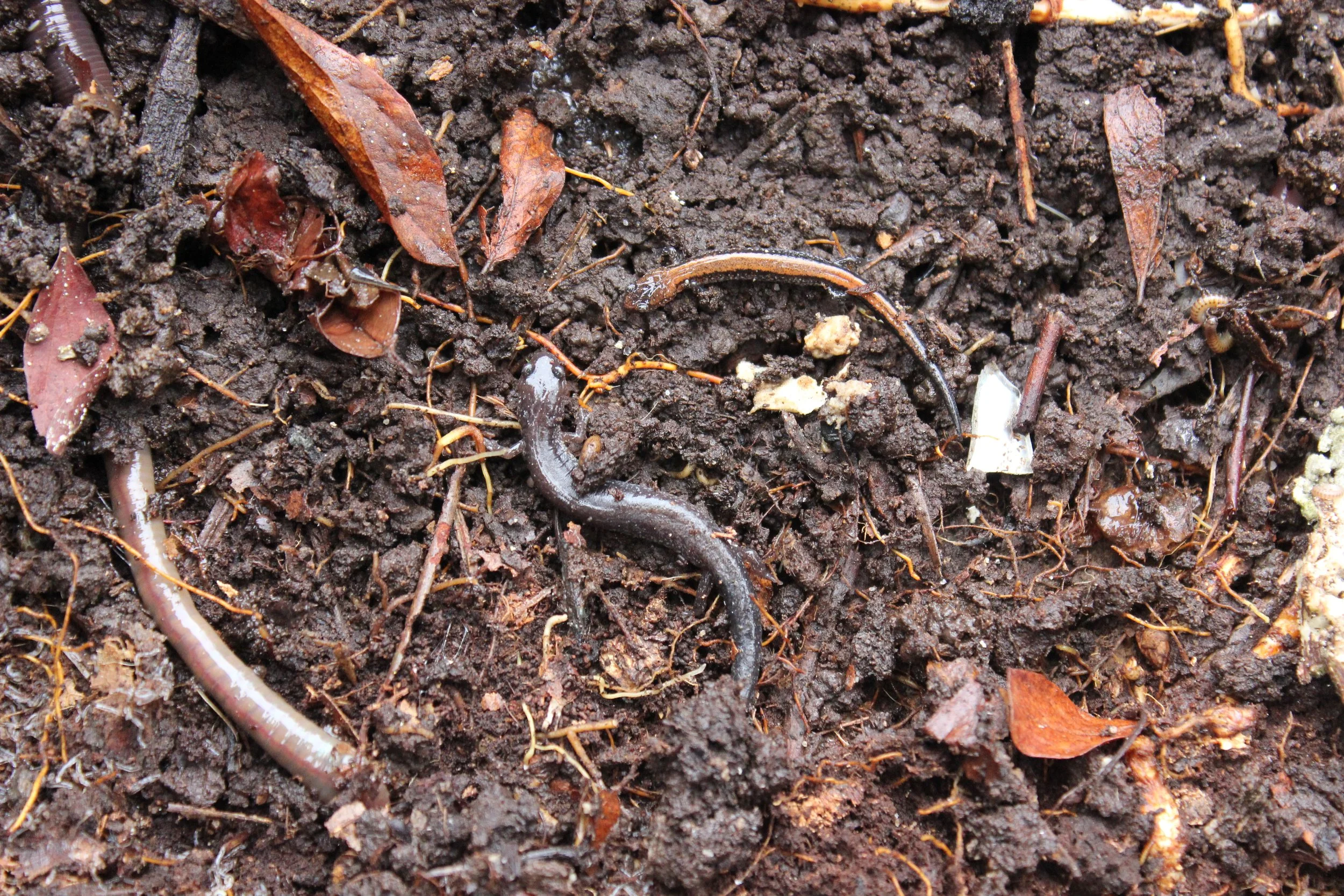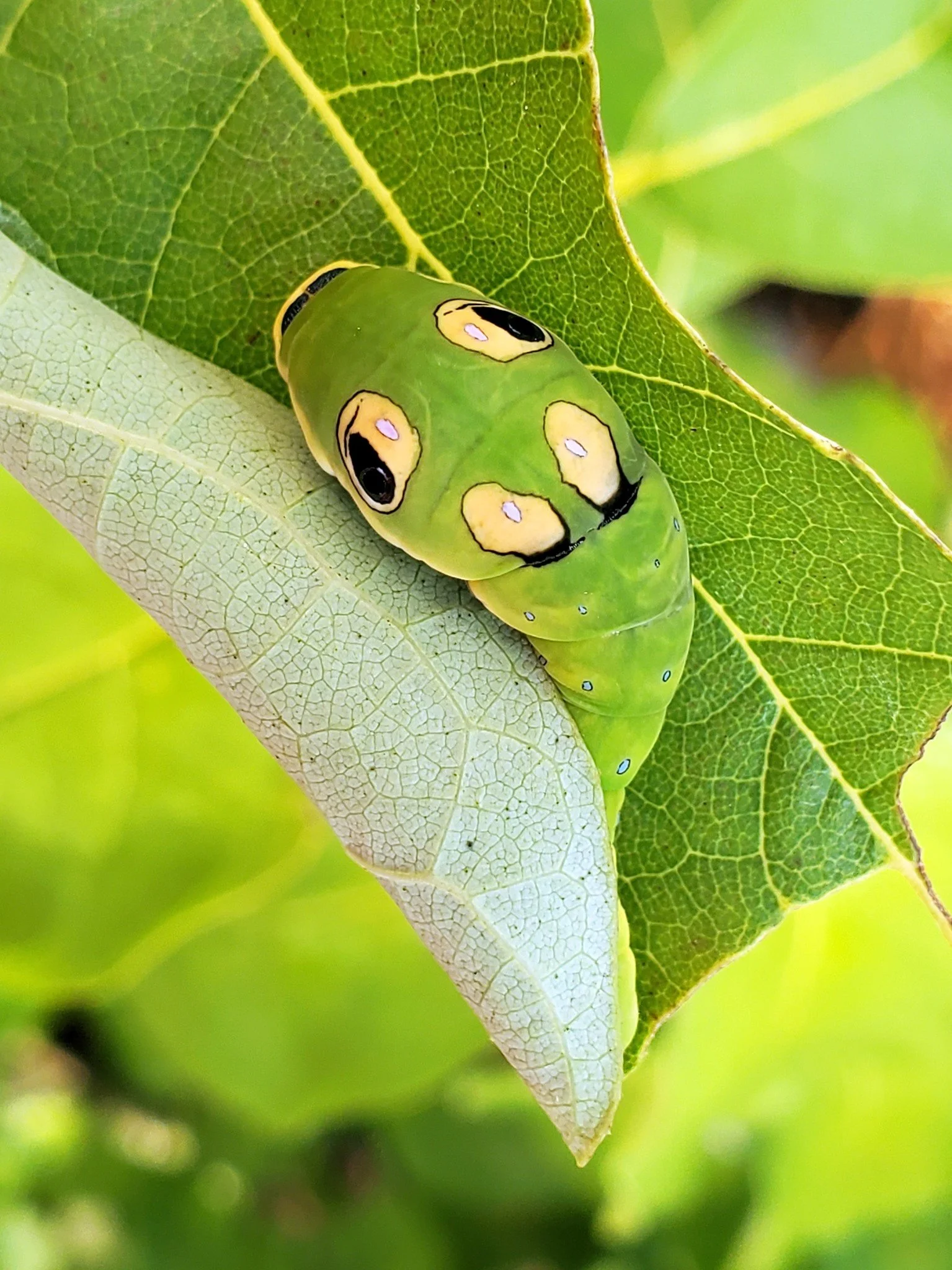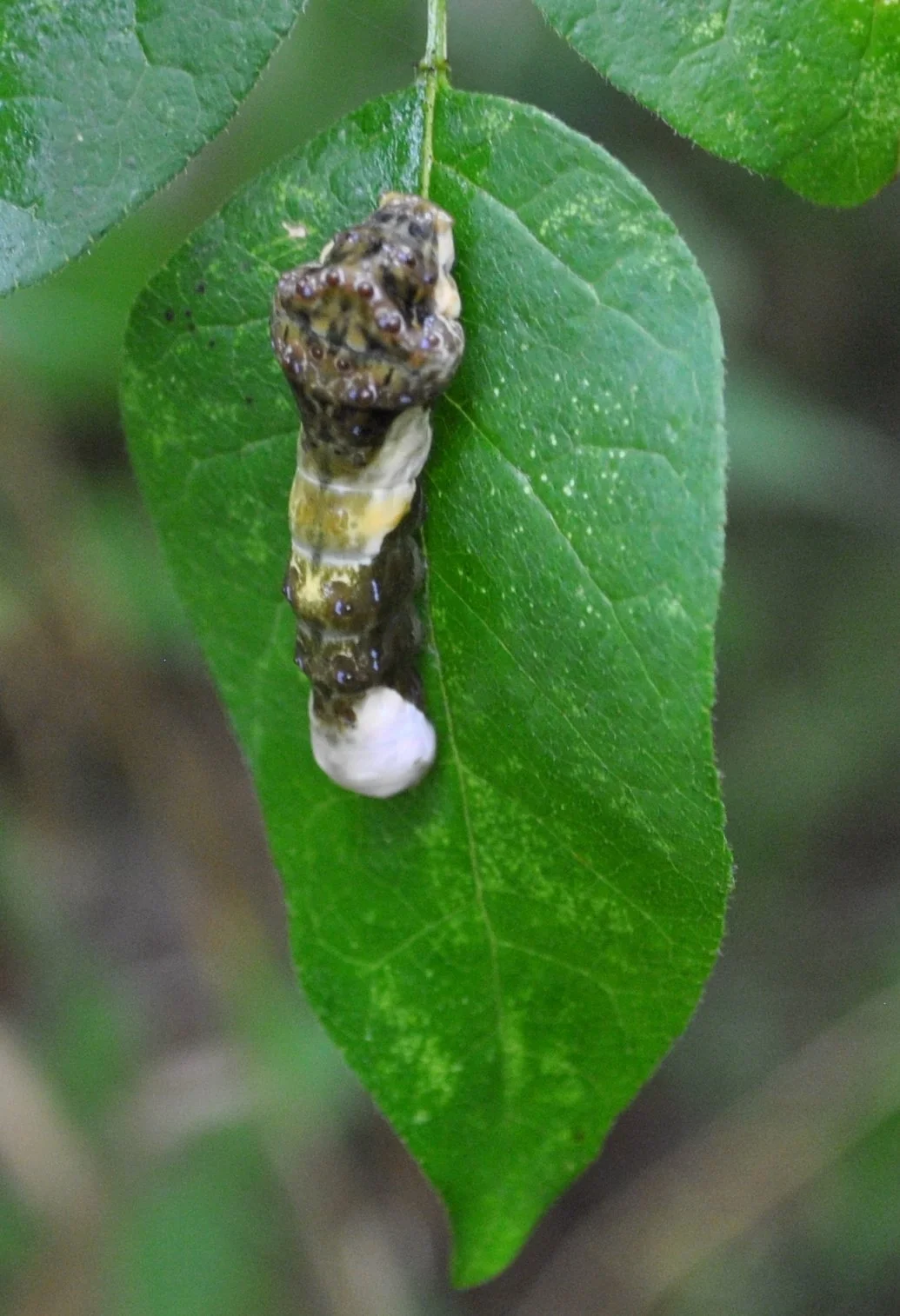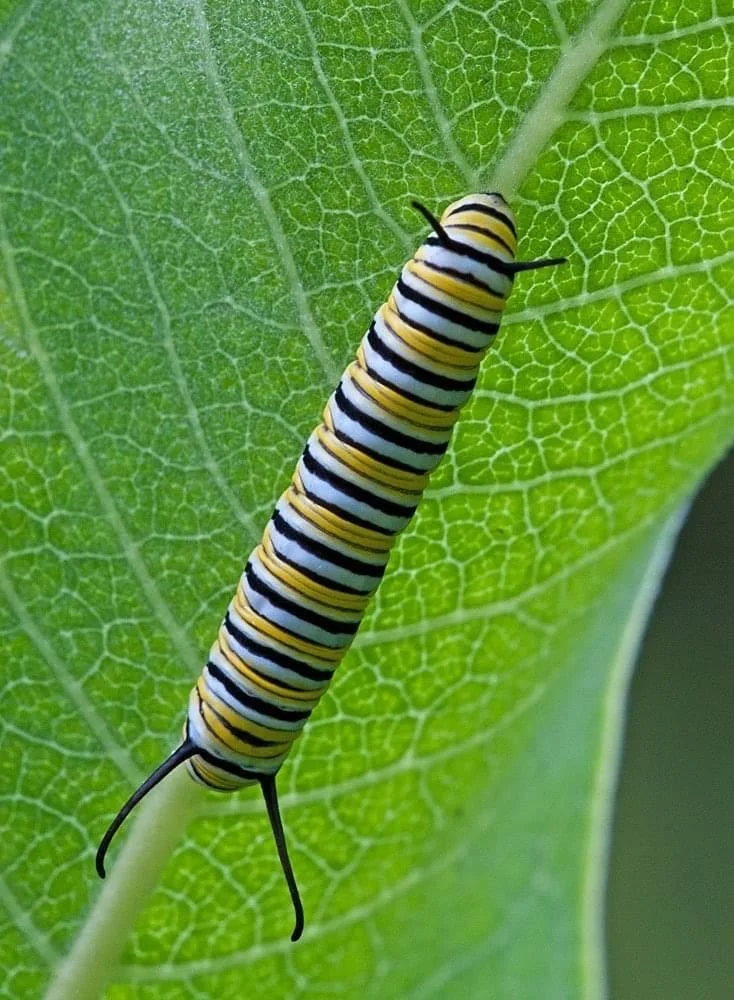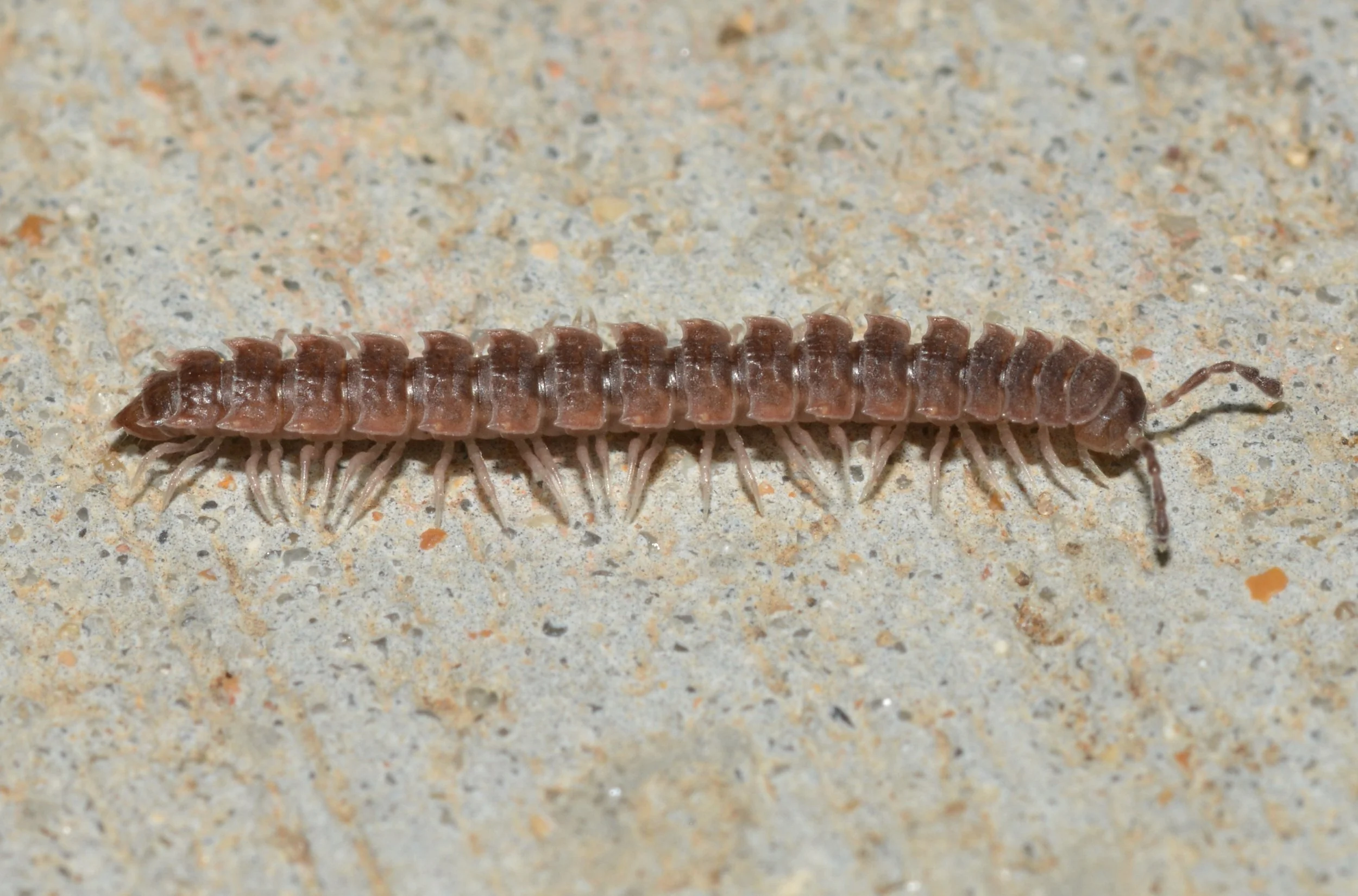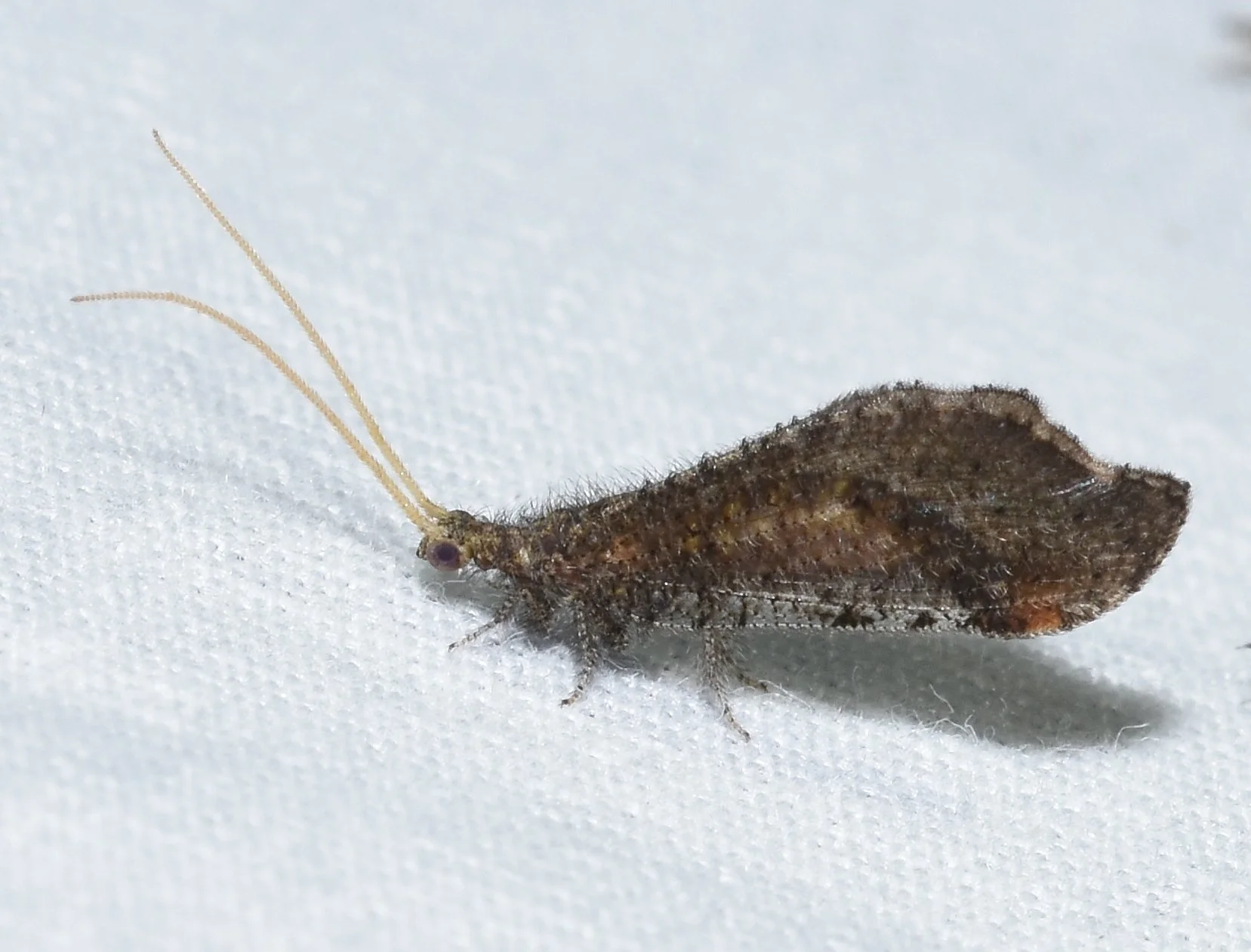Getting an up close look at an insect (photo courtesy of PJ Liesch)
In this episode we answer questions like "why do centipedes have so many legs?" and "do insects fart?" and learn about the ways that bugs view our world completely different than how we do with our Insect Anatomy expert PJ Liesch the director of the UW-Madison Insect Diagnostic Lab!
See more of PJ's work here!
And follow him on X (Twitter) @WisconsinBugGuy
Subscribe to QuACK on Spotify, iHeart Radio, Apple Podcasts, or your favorite podcast app!
Transcription
Hey, and welcome to Questions Asked by Curious Kids, or QuACK, a podcast made by Southern Wisconsin Bird Alliance. This is a podcast where we gather questions about nature from kids to be answered with a local expert. My name is Mickenzee. I'm an educator, and I'll be the host for this series. This episode, I'll be interviewing PJ Liesch, the director of the UW Insect Diagnostic Lab. Today, he'll be answering questions all about insect anatomy. All right, let's jump in with PJ. This is going to be a fun one, guys.
-----
Mickenzee: All right. Hey, PJ, welcome to the show.
PJ: It's good to be here.
Mickenzee: Before we get started with the questions from the kids, can you tell us a little bit about what you do at UW?
PJ: Sure. So my main job is to run the UW Insect Diagnostic Lab. And in a nutshell, what that means is I help identify insects, and other kinds of creepy crawlies, if you will, for people. That could be a farmer that finds something in their crop field. In a lot of cases it could be homeowners that find something in their home garden or in their yard and plants or maybe around their house. Sometimes it's medical doctors or foresters working in the woods, but I get samples from all over the place, so I help identify what those are. And if it happens to be an insect pest, I can help with some of the next steps in terms of what they could potentially do about it. And then I do a lot of education and outreach as well in my role.
Mickenzee: Oh, that's really cool. Like, you’re kind of like a detective for the public and what bugs are around.
PJ: A little bit. And I do see the same things again and again, you know, common garden pests and flower pests and things like that. But sometimes I really have to put my detective hat on. I've had insects that have shown up from overseas, and you really have to connect the dots to figure out where they came from. So you can find the resources to be able to identify them. So it leads to some fun adventures at times.
Mickenzee: That's really cool. So this episode, we've got a few questions about insects and insect anatomy. Could you tell us a little bit about how you came to know so much about insects, and why you like them so much?
The wonderful world of life just below the dirt (photo by USFWS)
PJ: Sure. So I would say it really started in childhood. I grew up in rural southeastern Wisconsin, not on a farm, but we shared a pond with the dairy farm next door. And so I spent a lot of time outdoors as a kid around the pond catching frogs, toads, salamanders, but also insects, fireflies and this and that around the yard. I was very fond of flipping over these, patio paver, stones that we use as stepping stones and just seeing all the worms and things underneath it. And I look back at that fondly, even to today. But that fascination with biology like that, and then coupled with, just some great biology teachers in high school, I knew from day one, when I started college, I wanted to major in biology and then along the way, I got linked up with an entomologist here at UW Madison, Doctor Chris Williamson, who worked with invasive insects such as the Emerald ash borer. And at that point, back in about 2005, 2006, it wasn't here yet in Wisconsin, but I did two summers, searching and surveying ash trees for any signs or symptoms of that insect in the southeastern part of the state. Didn't find it at the time, but that got my foot in the door to lead to graduate work. So I moved to Madison in 2007 to do my master's degree in entomology. Finish that in about 2010. Had a research position for a couple of years. And then about a decade ago, in March of 2014, I took over the reins at the UW Insect Diagnostic Lab. So it's a job I really love, and it's hard to believe I've been doing it a little over a decade at this point.
Mickenzee: Wow. I love when I ask people this question about how they came to know so much about something. It always starts with childhood curiosity, and that's really what this is all about. So all of our questions today were submitted by third and fifth graders at Lincoln Elementary School here in Madison. This third grader wants to know, why do some caterpillars look like a leaf?
The Spicebush Swallowtail caterpillar is a snake mimic (photo by USFWS)
PJ: Yeah. And I think it really boils down to evolution. Evolution can do some really cool stuff. Now, first of all, to set the stage worldwide, we know of over a million species of insects that have been described to science.
Mickenzee: Woah.
The Giant Swallowtail caterpillar mimics bird droppings (photo by Aaron Carlson)
The monarch caterpillar has warning coloration (photo by USFWS)
PJ: So this is the biggest, most diverse group of animals on the planet that we know of. And there's still plenty of undescribed undiscovered species out there. But when you think about, you know, out in nature, you've got all these species trying to duke it out, you've got insects maybe feeding on plants, you've got perhaps vertebrates or other insects feeding on those. There's this, this battle going on for survival. And there's a lot of strategies to help ensure that you, as an insect or other organism, survive. So some will have poisons or venoms and things like that. Some can have chemical defenses in many insects, including some caterpillars that will use camouflage as a way to avoid predation. And so they may have colors or sometimes shapes that allow them to blend in better on plants. They might be the same color as plant leaves, although I will say again, we see some really cool things come out of evolution. There are some caterpillars that very, very strongly resemble things like bird droppings. Some will even have a little bit more, aggressive or warning coloration. They might have spots that resemble the eyes of a snake on them as well. So there are some that, their strategy is to kind of blend in as best as they can. Could look like part of a plant leaf. Some of our inchworm caterpillars, including here in Wisconsin, are excellent twig mimics. They just look like a short, stubby, broken off twig, which is really cool. But other ones go with other color patterns to help them survive.
Mickenzee: Oh, that perfectly leads into our next question the fifth graders would like to know, can bugs or insects see in color? And maybe that's not the same for all, but what abilities do they have?
Blue-eyed Darner showing off it’s beautiful compound eyes (photo by Joshua Mayer)
PJ: So I think you hit on a really important point. It's not the same for all insects. So can insects see in color? Yes, some can. Not all of them can. So first of all, if you think about some of our juvenile insects, they have very simple eyes. A caterpillar for example, they will have eye structures that can perhaps detect light versus dark, but they're not getting very good images of the world around them. But then when you get to the adult stages, you have these larger compound eyes with all these individual lenses, and they have some photoreceptors in there. It varies from insect to insect in terms of the number of colors they can detect. And in general, insects, their vision isn't going to be as good as our color vision. Some can have pretty good color vision, though, like honeybees, which we know can fly long distances to look for flowers. But again, they can see in color. However, the way they perceive color is very different than humans. You know, we see from kind of the red end of the spectrum to, violet, if you will, and everything in between. With insects. It's generally shifted to higher frequencies into the ultraviolet range. So they really aren't seeing the red end of the spectrum so much, but they can see, kind of the, the yellows and greens and blues and violets and then into the ultraviolet range, which as humans, we can't see. So that's really cool. In my mind, things like bees we know can see, patterns on flowers that are invisible to us.
Mickenzee: Wow.
PJ: That's very conspicuous to them. It might make that somewhat drab looking flower look like a bull's eye to them. And that's pointing to the nectar source. So color. But it's also shifted a little bit into that UV range, which is really fascinating.
Mickenzee: That's so spectacular. Oh, it's like a superpower. Okay. This question asker wonders why do centipedes have so many legs?
Lots of legs to spare (photo by Andy Reago & Chrissy McClarren)
PJ: I think it goes back again to evolution. So we would have to go way back in geologic history like hundreds of millions of years. And at one point in time, there would have been a common ancestor for millipedes and related creatures and centipedes and things like that. And with evolution, you get some splits in the tree of life, and things go off in different paths and evolve from there. And some lineages are really successful, like the insects I mentioned, over a million known species with centipedes and millipedes. They basically have that many legs because their ancestor did. And that has been kind of the path and the tree of life that they have followed. Now, when you think about it, there could be a couple of advantages for this. If you're something like a centipede, you're generally going to be an active, agile predator. But a couple of things that that could help you out with, if you have a lot of legs that might help grip on to unusual surfaces, hanging upside down on, you know, rocks inside of caves or something like that. So that might help out with the grip. It could also be partly a strategy. There's something called leg autonomy. And the idea is if you were something like a centipede and you get attacked by another creature, you know, you can perhaps lose a few legs and run off to live and fight another day, so to speak. So that might help you out as well, versus if you had relatively few legs, say, six legs or eight legs, and you lose three of them, that might be a lot harder to stay balanced and you might not be able to walk at that point.So we know a centipede, sometimes they'll they'll lose legs and they can still scurry off and, and go about their business.
Mickenzee: Totally. Oh my gosh. Yeah. And finally, this last question is pretty silly, but I don't think I know the answer. The fifth graders want to know do insects fart?
Beaded lacewings have weaponized farts (photo by Andy Reago & Chrissy McClarren)
PJ: So the answer is yes, at least some of them. So we don't know for sure if all do. And actually there's some evidence that not all insects will necessarily fart. But if you think about it in its most basic elements, similar to us, you know, we have a digestive tract, essentially a tube that runs from one end of our body to the other. Inside of that tube are microbes, bacteria and yeast and things like that. And so when we ingest food, our body is breaking down and storing nutrients, but it's also serving as food for this community of microbes that live within us. And sometimes those microbes produce stuff like methane and other gases like that which come out the other end of the body. Same kind of thing, same general principles would apply to insects. They are ingesting materials. In a lot of cases, there's lots of herbivorous insects, so they're feeding on plants or plant material such as wood. And within their bodies they may not be able to immediately break that down for nutrition, but they'll have symbiotic microorganisms living in their gut that can help break that down. But as a byproduct, you can get gases like methane. So, the short answer is yes. At least some insects we know can fart. One other cool thing, though, in some cases, that's been taken to an extreme. There is a species of beaded lace wing that lives in association with termites, and this particular lace wing essentially has weaponized farts.
Mickenzee: Oh my goodness.
PJ: It produces a chemical that it can release and it's a gas and it will stun the termites around it. So in some cases it's used for rather interesting purposes.
Mickenzee: That's great. Oh how incredible. I feel like I learned so much today. Thank you so much to the students at Lincoln Elementary for submitting your nature questions. And thank you, PJ, for taking the time to teach us.
PJ: Yeah, thank you very much for having me today. It's been fun.
-----
If you're interested in learning more about insects or getting involved with our programs, please head to our website swibirds.org and check out the free lessons, games and activities like Monarch Migration Obstacle Course as well as the event calendar and citizen science programs. You could sign up for things like the Integrated Monarch Monitoring Program, Monarch Watch, or the North American Butterfly Count.
These are all very butterfly specific examples, but if you keep your eye out, there is more insect content, I promise. If you have a big nature question that you would like to have answered, please have a grown up or teacher submit your question to info@swibirds.org with the title Questions for QuACK. Make sure to include your grade in the school that you attend so I can give you a shout out on the show. Thanks for tuning in and I hope you join us next time on QuACK!
Check out SoWBA’s free lessons, games, and activities!
Get out and explore nature with us!
Make a donation to Southern Wisconsin Bird Alliance
Audio Editing and Transcription by Mickenzee Okon
Logo design by Carolyn Byers and Kaitlin Svabek
Music: “The Forest and the Trees” by Kevin MacLeod


